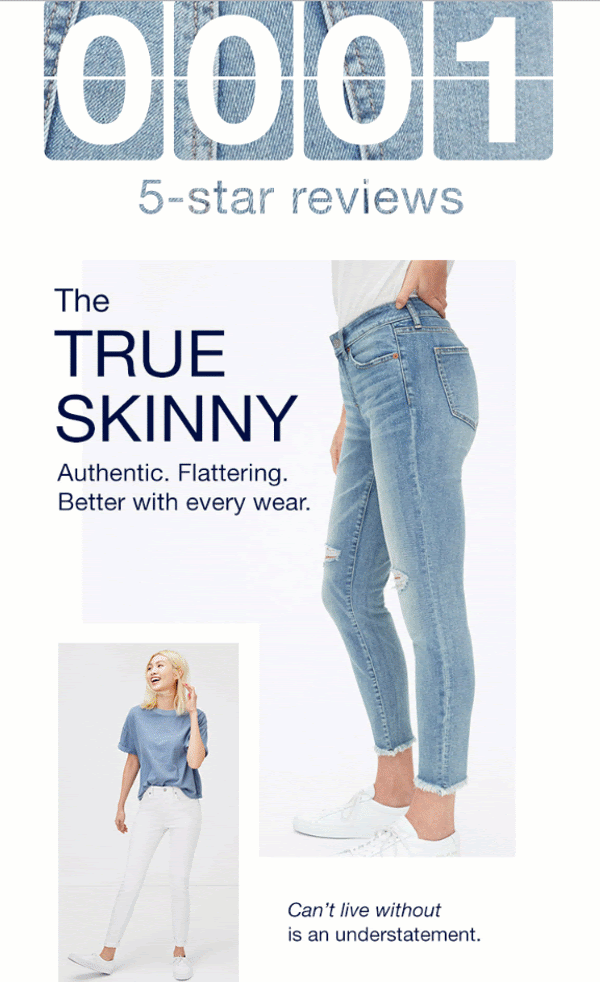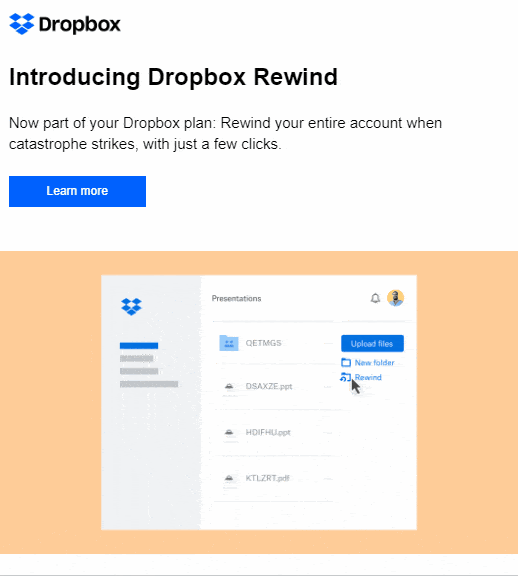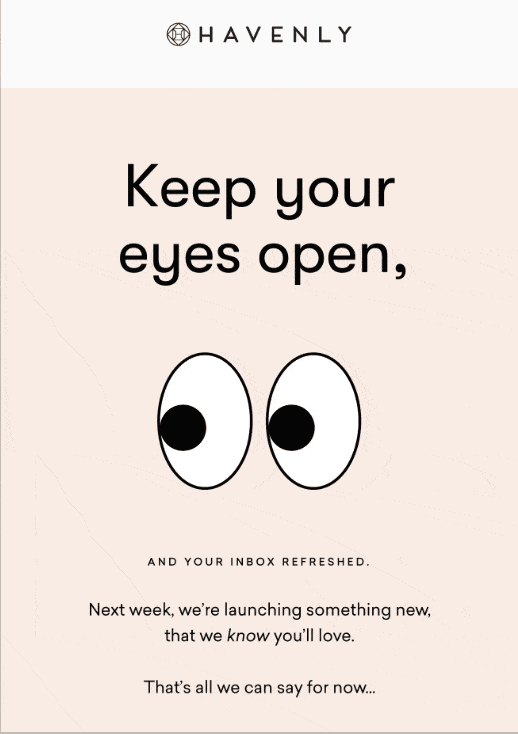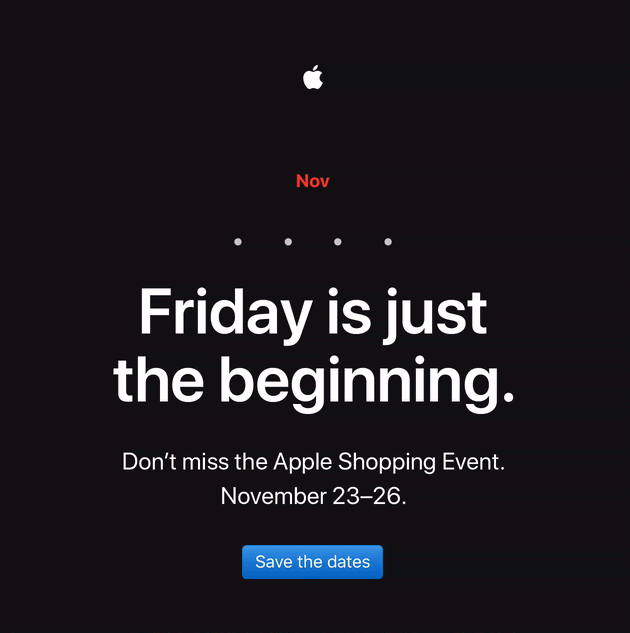Discover the power of adding GIFs to your emails and learn when to effectively use them in campaigns.
To paraphrase one of the most well-known memes of today, it’s pronounced GIF, not GIF.
The debate surrounding the question of whether it’s ‘the hard g’ or ‘the j like in Jiff, the peanut butter brand’ is almost as heated as the question of whether GIFs are okay to use in email marketing or not.
In this article, NetHunt keeps exploring the internet culture and how it can be used to a digital marketer’s advantage. Today on the menu, GIFs in email marketing.
What Is a GIF?
Technically speaking, a GIF (apparently pronounced as ‘jif’ or ‘gif’), which stands for Graphics Interchange Format, is an image file format developed by CompuServe in 1987, just like PNG or JPEG.
Fun Fact: The GIF format is older than 35% of the US population.
You can use the GIF format to save your still images for publishing them on the internet - due to wide support across browsers and email clients, GIFs have accumulated a fan base of devoted users since the onset of the internet.
But there’s another reason for GIF’s popularity. The key difference between GIF and other image file formats is that you can use GIF to create and save animated images.
Hence, within the framework of the internet culture, GIF has evolved past being just an image format and became a common noun for all animated images out there.
Aren’t animated images just a video?
Not quite. While GIFs can serve the same purpose as videos, they’re inherently different. First of all, there’s no sound. Secondly, the format wasn’t originally created for animations but just happened to be used in that way. GIF files just hold multiple pictures at once, and load them sequentially, like a flipbook, when decoded a certain way.
As the internet community grew, GIFs became more and more popular. A lot of social media platforms and messengers have integrated GIF apps into their keyboards, making it extremely easy to use GIFs for better communication. Today, GIFs are an irreplaceable part of the holy trinity of ‘wordless online communication’ - emojis, ‘stickers’ and GIFs.
Some other factors that contributed to the rise in GIFs’ popularity include:
- Up until 2014 when HTML5 was released, the HTML standard didn’t support videos.
- Almost all browsers and email clients support GIFs.
- They’re easy to make.
You can love them, or you can hate them, but there’s no denying that GIFs have taken over the world of digital, your email inbox included. The question is - are GIFs an appropriate tool to use in email marketing? Let’s find out together.
Using GIFs In Email Marketing: The Good
According to the 2020 State of Email data gathered by Litmus, 51.28% of marketers said they’re using animated GIFs at least sometimes in their marketing emails.
[Litmus]
It’s safe to say that GIFs are an extremely popular email marketing attribute. There’s a good reason why so many marketers turn to use them in their email marketing efforts.
It’s effective for grabbing your reader’s attention.
It’s a proven fact that motion attracts people’s attention way better than still images. If you want your readers to instantly be interested in your email and interact with it for a little longer, you should add an animation. You can either place a GIF at the very beginning of your email to instantly catch your reader’s eye, or locate it further down the page to prompt them to scroll through the entire message:

It boosts engagement levels.
Once your email readers are interested in your message and are willing to read through it, they become more focused on the contents of the email. This allows you to communicate your message more effectively by pointing out the information that matters the most. As a result, you can expect an increase in your click-through rate.
Animated GIF emails see an increase in clickthrough rates of up to 26%. [Email Institute]
It helps to emphasise the most important parts of your message.
On top of that, animated with GIFs emails also see an increase in conversions and can generate more revenue than their static counterparts. The reason for this is that you can guide your email recipients towards the action you want them to take by adding visual cues. For instance, thanks to GIFs, you can make your CTA button more prominent and, therefore, actionable.
Emails with GIFs pulled in 12% more revenue than their non-animated counterparts. [BlueFly]
It allows demonstrating the product or its features.
GIFs provide you with an opportunity to showcase your product and all its features in a matter of seconds. You can easily replace hundreds and hundreds worth of words of instructions and explanations with a simple visual demonstration of your product in action.
By showing the versatile nature of the product through a GIF, Dell earned a 6% increase in its open rate on the campaign, a 42% jump in its click rate and a 103% increase in its conversion rate. [Marketing Sherpa]

It helps to simplify a complex idea and present it visually.
If an image is worth a thousand words, an animated one is absolutely priceless. A simple GIF-explanation can make the concept of your product more accessible to the email recipients. Subsequently, they’ll be more inclined to take further action with it - people like what they understand.
It sets the right voice and tone and adds to your brand personality.
Not only are GIFs insanely popular, which will show your email subscribers that you’re modern and up-to-date in its marketing efforts brand, but they’re also very telling. Thanks to GIFs, you can easily set the right tone in your email and tell a story in a more efficient way. Moreover, adding a brand-specific GIF will help you to build your brand persona and strengthen your brand image.

GIFs are more space-efficient than videos.
Essentially, GIFs serve the same purpose as videos but are significantly more compact than the latter. Thanks to choosing GIFs to incorporate into your emails, you can leverage the benefits of video marketing without making your emails too heavy to load. If not, you can always animate a part of your video and use the created GIF to prompt your readers to click on the full version.
It’s good for generating awareness by warming up the readers.
You’re not limited in your creativity when crafting a GIF for your email campaign, which makes these animated images a perfect tool for teasing your audience. For instance, you can include a countdown to warm them up for the upcoming launch and boost their anticipation levels.

It can help you stand out from the crowd.
Despite the universal popularity of GIFs, only a portion of marketers use them in email marketing. You can still jump on this bandwagon to differentiate yourself from your competitors.
Using GIFs In Email Marketing: The Bad
At the same time, when you open your inbox, you don’t see every email include GIFs. That’s because, alongside its numerous advantages, GIFs also have several drawbacks that can have adverse effects on the results of your email marketing campaign.
The main disadvantages of using GIFs in email marketing campaigns are:
- GIFs are often perceived as unprofessional.
One of the main reasons why a lot of marketers avoid using GIFs in their emails is because GIFs aren’t a good match for their audience. Unfortunately, there are only so many audience segments that vibe with the use of animated images - others can deem them inappropriate, unprofessional, cheap, impersonal and annoying. For instance, according to research conducted by NNGroup, in certain audiences, adding animation to an email increased its negative word count by 40% and decreased its positive word count by 30%:
If your email subscribers are standing on those grounds and you fire off an email with a GIF in it, it can lower your email sender’s score and your deliverability.
- Lack of accessibility.
One of the reasons why some people consider GIFs to be annoying is their lack of accessibility. Unfortunately, not everyone can have a great time interacting with animated images: content flashing rates between 2 Hz and 55 Hz can harm users with photosensitive epilepsy; visually impaired users may have difficulty reading or reviewing the content on a GIF before the animation changes. Finally, those relying on assistive technology like screen readers can have a hard time comprehending the contents of your GIF image if you don’t provide the Alt-text. - The GIF format is notorious for its poor background transparency.
Considering GIF is a relatively old format, it’s not compatible with some of the more modern design trends. For instance, GIFs aren’t graceful when it comes to transparent backgrounds, which can limit their use tremendously. - GIFs can increase email loading time.
Although this downside is easy to fix, it’s still a problem you need to be aware of - often, when a GIF is too long and heavy, it can make your emails load slower.
Where to Find a GIF & How to Create One Yourself
Good or bad, you can’t deny the fact that GIFs are extremely popular.
In fact, they’re so hot that there are whole separate search engines created just for GIFs. You can easily find a perfect animation to spice up your email and add some personality to your campaign.
All you need to do is know where to look for. NetHunt has compiled a list of the top-5 best GIF libraries that any marketer can benefit from:
1. GIPHY
Created in 2013 by Alex Chung and Jace Cooke, GIPHY is, essentially, ‘Google for GIFs’. Started as a small project, GIPHY has quickly become the next big thing and now enjoys 500 million daily users sharing over 7 billion GIFs a day!
With such outstanding traffic, it’s only natural that GIPHY can boast one of the most extensive GIF libraries on the internet. It’s your go-to place for all the freshest trends in the world of animated images - just check out the ‘trending’ tab.
You can search relevant GIFs for your next email campaign by keyword, category (such as ‘emotion’, ‘memes’, ‘holidays’, etc.), user and other attributes. Once you find a good animated image to use, the system will suggest a couple of dozens of related GIFs to have a look at. After you’ve found the perfect one, you can either copy the link or copy the code to embed it into your email template.
2. Google Images
This one is obvious. While GIPHY could claim to be ‘Google for GIFs’, Google is Google. If you don’t know where else to go, you could always turn to your old pal and hope for the best.
You might’ve noticed that Google Images automatically suggests GIFs from time to time, but they aren’t that common - when looking for the perfect animation for your next email campaign, you want to have access to all the options available to you.
To do that, when searching for a particular keyword, you should go to Tools > Type > GIF.
3. Reddit
Another hub of animated pictures is Reddit. It’s full of original, eye-catching content for you to exploit in your emails.
Just be wary of the fact that Reddit can be a rabbit hole if you don’t know what you’re looking for. The best ways to look for GIFs on this platform is by checking out specific subreddits. For instance, there are subreddits for dance GIFs, mechanical GIFs, analogy GIFs, and reaction GIFs.
You can be as generic or as specific in your GIF requirements. Reddit is likely to have an image just for you. I recommend to start out by taking a look at these subreddits:
- r/gifs/
- r/AnimalGIFs/
- r/reactiongifs/
4. Tumblr
Home to many digital creators, Tumblr is famous for its gifs. Thanks to the fact that Tumblr is a rather ‘woke’ social media platform, all the content posted there is up-to-date and hits just the right spot. Therefore, if you need a relevant GIF to make your email campaign pop, you can look through your Tumblr dashboard.
There are several ways in which you can search for GIFs on Tumblr:
- Search by keyword
- Search by #gif hashtag
- Follow blogs that share GIFs
5. Tenor
Tenor is yet another GIF keyboard that offers a huge selection of different animated images for you to use. If categorises all the GIFs in two large groups - Reaction GIFs (wink, shrug, smile, applause, etc.) and Thematic GIFs.
Even though the Internet offers an extensive selection of different GIFs to fit almost any occasion, you don’t have to stick to them. Often, as an email marketer, you find yourself in a situation where the only way to leverage the benefits of using GIFs in email marketing is to create a GIF of your own.
The easiest way to succeed in that quest is to use GIPHY GIF Maker. You can create GIFs and backdrops and decorate them with captions, filters, stickers, and more right on the website, without much effort.
If you want to check out other tools for GIF creation, have a look at the following web-based online tools:
- Picasion
- Gickr
- GifPal
- MakeAGif
- Adobe (Photoshop and After Effects).
Best Practices for Using GIFs In Email Marketing
Now that you know where to find GIFs and how to create your own ones, it’s time to learn how to incorporate animations in your email marketing campaigns in such a way that you avoid its drawbacks and leverage its benefits.
Do Your Research
The first thing you need to do when preparing your GIF email marketing campaign is to do your homework and examine how your competitors are using animation in their marketing efforts.
You need to be able to answer the following questions:
- Are GIFs a popular email marketing tool in my industry? In my niche?
- How many of my competitors are using GIFs in their email marketing campaigns? Are they successful?
- Who is my target audience for the animated email campaigns? How does my target audience perceive GIFs?
- What can I animate in my email marketing campaign for it to look organic and serve a purpose?
It could well be that GIFs aren’t a good match for your particular business, either because your industry calls for a serious approach to email marketing (medicine, education, finance), or because your target audience doesn’t want to receive emails with GIFs in them.
Understand Your Audience and Segment Them
If you’ve successfully completed the previous step, you should already know who you’re sending out your animated emails to. However, it’s not enough to just know them, you need to understand them well, too.
For instance, younger email subscribers are more susceptible to GIFs in emails than older generations of customers. Take a look at the usage of GIFs by age in the US:
On top of that, depending on the gender of your email recipients, their background and cultural differences, they might be affected by different animations to a greater extent. It’s your task as a marketer to identify those preferences and make sure you send the right email campaigns to the right audience segments.
You might want to double-check that the email clients the majority of your target audience uses support the GIF format:
Have a Purpose for Your Animation
The worst thing you can do is include a GIF into your email campaign just for the sake of including one. They aren’t the garnish to make your email plate look extra yummy. In fact, they’re often the main course.
Because of their mobile nature, they catch the reader’s eye, turning into the star of the show - nothing else in your HTML email can steal the spotlight.
That’s why it’s vital for you to ensure that your GIF serves a purpose and contributes towards achieving the email marketing campaign’s goal. Some of the most common purposes for including an animation into an email are:
- Announcing a sale
- Introducing a new feature or product
- Enhancing the overall mood or set the scene for the email you’re writing
- Drawing attention to new content
- Teasing new video content
- Serving as easy-to-follow tutorials
- Telling a story
Marry Your GIF and Your CTA
People are most attracted to motion pictures, which you can use to your advantage. Make sure that your animation compliments your CTA and drives your email reader’s attention directly to the conversion button.
It’s worth doing some planning beforehand to identify the best outlay for your email template and make sure your GIF goes hand in hand with your CTA. Some of the most effective ways of pairing the two include:
- An animated arrow that points users directly to the CTA button, creating visual cues.
- A GIF image that previews a still from a video with a play button icon that then links directly to the web page for the video.
- A dancing button that, when clicked, takes the reader to your landing page.
- A countdown GIF to encourage your reader to take the desired action quickly.
Alternatively, you can take this practice a notch further and animate your CTA button! Vrai & Oro did this in a very subtle yet effective way:
Only Use Brand-Appropriate GIFs
It can be incredibly tempting to go with the trendiest GIFs and instantly boost your engagement levels, but you need to remember that a GIF is a part of your branding. That’s why you need to limit your choice of animations to only those images that align well with your brand image and brand persona.
The best practices to bring your GIF branding game to the next level are:
- Putting your own spin on a time-tested meme, e.g. incorporating some brand-name related puns and wordplays.
- Finding a way to incorporate your watermark or brand logo, or other branding elements such as fonts, colours, icons and more.
- Create an entirely new custom animation with a GIF animator that you then export as a GIF.
- Incorporate an animated GIF into an email design that is already established.
Keep It Light
One of the biggest downsides of using GIFs in emails is that they can make them heavier, and, subsequently, increase the loading time.
On average, people spend 3-5 seconds waiting for the email to load, and if it doesn’t load - they just bin it. An email too heavy can have negative effects on your conversion rate, your bottom line and your email deliverability as it spoils the user experience. Hence, it’s important to optimise GIFs for use in email marketing campaigns.
As a rule of thumb, the smaller your GIF is the faster it loads in your emails.
Some of the most effective methods of keeping your GIFs light include:
- Using simpler transitions. For instance, the fade effect used instead of the regular cut can make your file 7.8 times heavier!
- Choosing illustrations over photos whenever possible. Photos are too detailed and use too many colours, all of which contributes to increasing the overall size of the GIF file. Illustrations, on the other hand, typically use more solid-colours components, which makes them less heavy.
- Monochrome is the new black! Overlaying a single colour over your GIF and toning it one colour can reduce the overall size of the file.
- Keeping the number of frames to a minimum. Each frame your animation contains adds weight to the GIF, so it’s best to limit the length of your GIF. Besides, with the ever-decreasing attention span of modern people, a shorter, snappier GIF is more likely to have a better impact on the viewer.
- Cropping the image. The larger the dimensions of the image you are creating are, the larger the file size will be too. Crop the image as much as possible to only include the sections you’re animating.
Double-Check Your File and Make Sure It’s Properly Embedded
It’s an obvious step to take but it often gets overlooked. A simple double-check of what your GIF looks like on the recipient’s end could’ve saved a dozen of email campaigns - look through the email before you hit that ‘SEND’ button.
Even if you’re using a drag-and-drop email template builder, you still must make sure everything went smoothly with your GIF.
There are two ways in which you can check whether you’ve embedded your GIF into the body of your email correctly or not:
- Skim through your email’s HTML code (make sure to go through every line to spot any mistakes or inconsistencies);
- Test your email (even if you aren’t particularly tech-savvy, you can always test-send your email template to see what recipients will see).
🔥 NetHunt’s Pro Tip: Don’t send a GIF as an attachment, it won’t display properly.
Remember to Add the Alt-Text
In case something goes wrong and your GIF gets lost in the endless web code translation, you want to still be able to convey your message successfully.
To be able to do this, you need to make sure you customise the Alt-Text shown to your email recipients. Besides, it’ll help you kill two birds with one stone - you will also cater to those who don’t have quite the same access to technology.
When creating your Alt-text, you need to make sure that it’s:
- Straightforward, descriptive, and detailed
- Clear and conveys an easy-to-understand message
- Effectively summarises everything that’s happening in the GIF in a couple of sentences
A/B Test Your GIFs
Last but not least, you must remember that even though this guide is extremely comprehensive and offers valuable information about using GIFs in email marketing, it might also be completely irrelevant to your particular business.
You need to conduct several A/B tests to find out how exactly your target audience feels about receiving emails with GIFs and which animations work best for them.
To find out more about the A/B testing basics, A/B testing best practices and A/B testing in email marketing, check out our blog!
DOs and DON’Ts of GIFs In Emails
✔️ DO keep your GIFs relevant and appropriate - always check the GIFs you use for any alternative meanings to stay on brand; it’s better to stay away from controversial animations unless it’s your direct intention.
❌ DON’T go overboard - 5 animated elements per email is usually the limit; anything else may be too flashy and distracting.
✔️ DO check the email client’s compatibility
❌ DON’T neglect the first frame - if your email subscriber’s browser or email client doesn’t support GIFs, they’ll only see the first frame in a form of a static image; it’s important to make sure the first frame of your animated image is capable of delivering a powerful message on its own.
✔️ DO keep it short and sweet - keep the number of frames in the GIF to the minimum to make them less heavy.
❌ DON’T infringe the copyright laws - if you use someone else’s GIF, make sure you have the rights to do so and reference the source.
✔️ DO include other elements in your email - you can’t send out an email that consists entirely of GIFs, so you need to make sure all the elements of your email are aligned with each other.
GIFs are definitely an integral part of modern internet culture. They’re fun, customisable, easy to use, and they keep multiplying at an exponential rate. Therefore, it’s only natural that digital marketers want to tame them and use them to the business’ advantage.
The only trap email marketers can fall into is abusing GIFs. While it can be tempting to make your email campaign as lively and flashy as possible to grab the reader’s attention, you need to remember that everything is good in moderation. Maintain balance, keep the possible drawbacks in mind, and GIFs will be your gift that keeps on giving!
And test them! There’s no such thing as too much A/B testing.
Table of Contents
Crack the sales formula with CRM Lab
Twice a month, receive actionable CRM content to your inbox.





